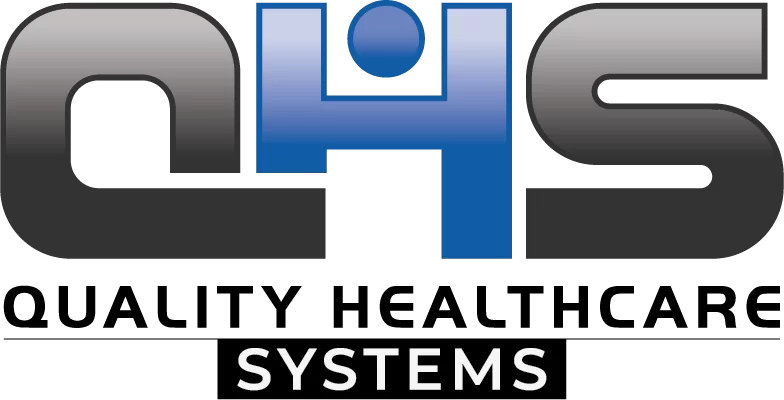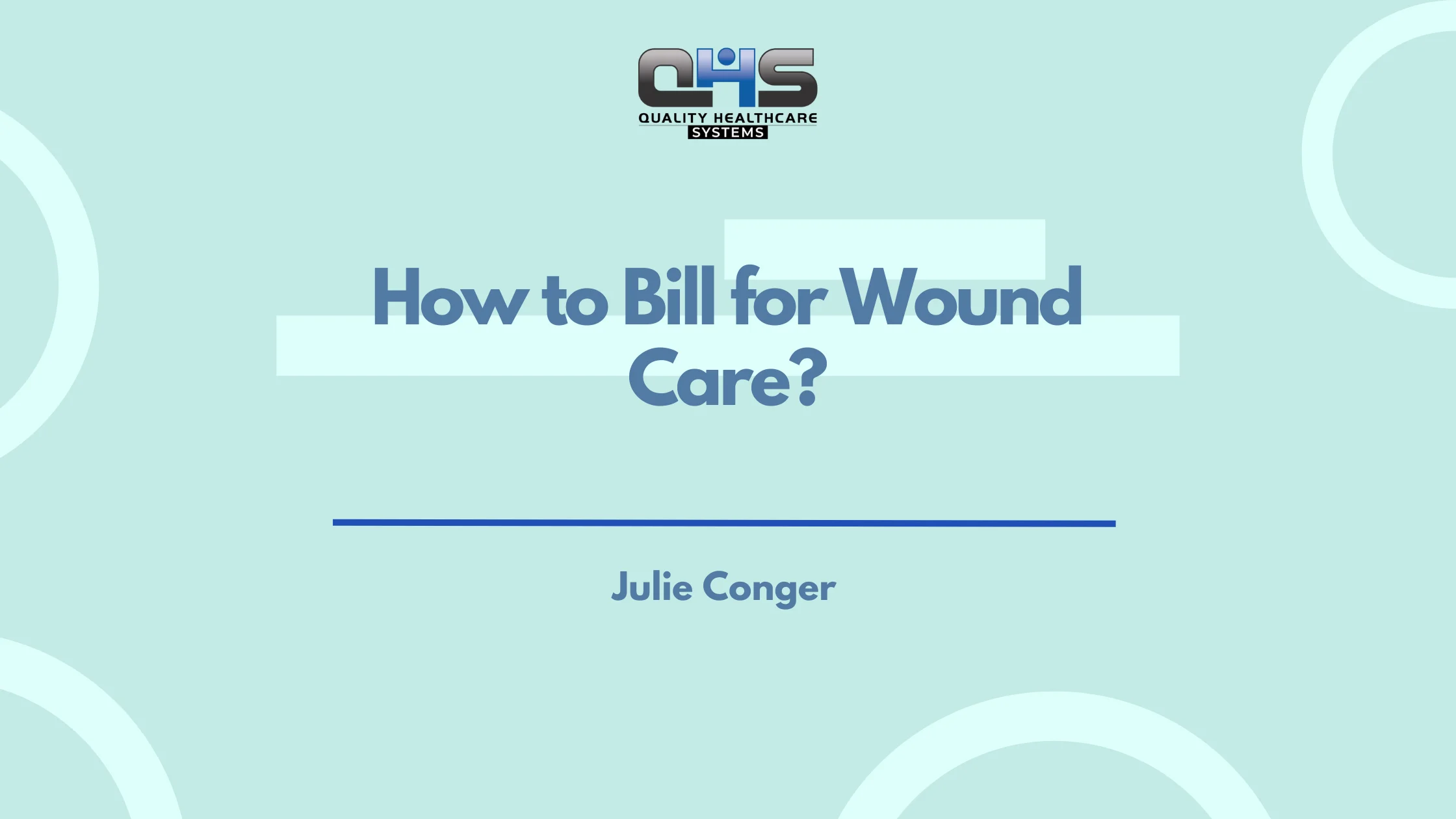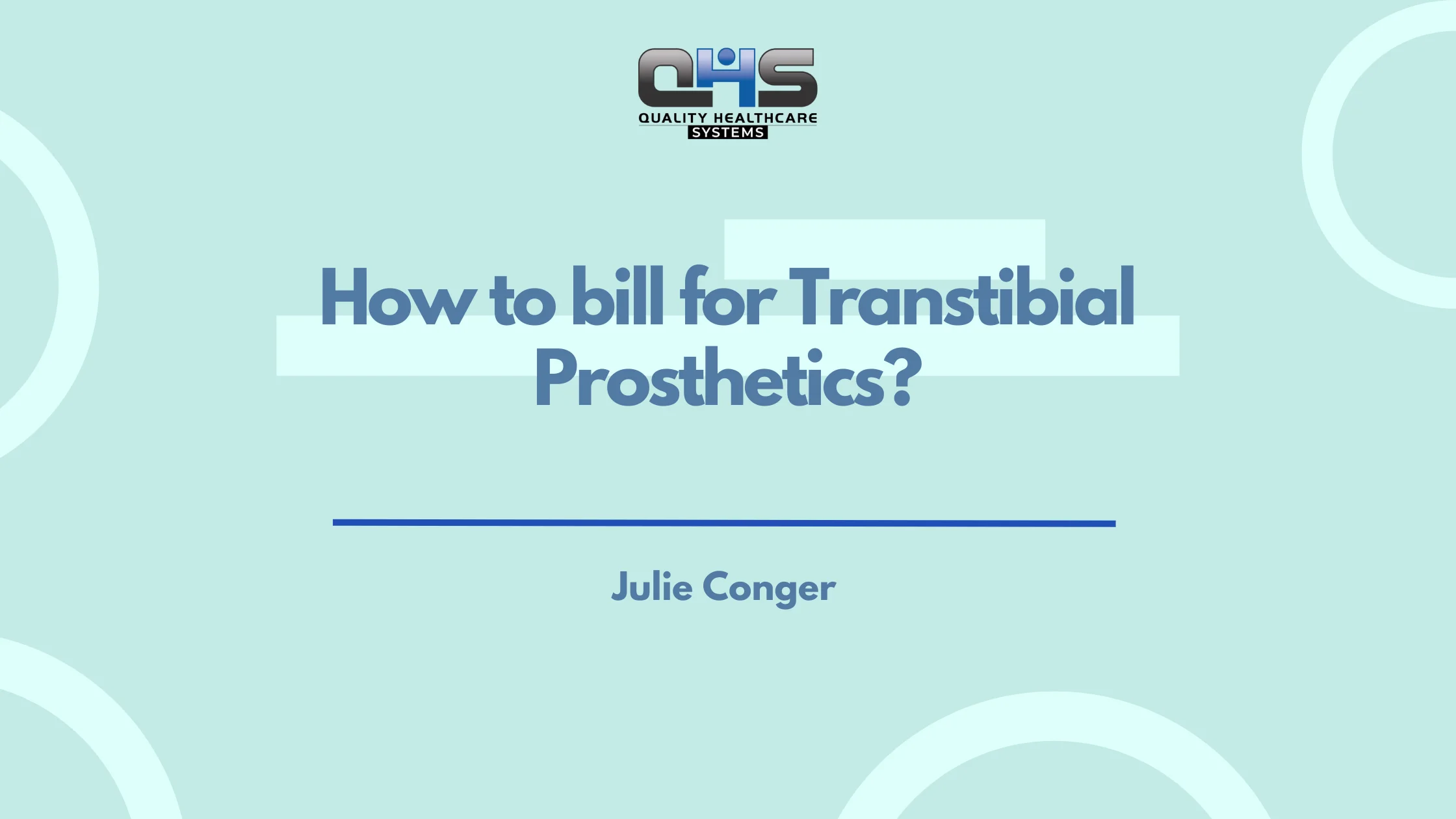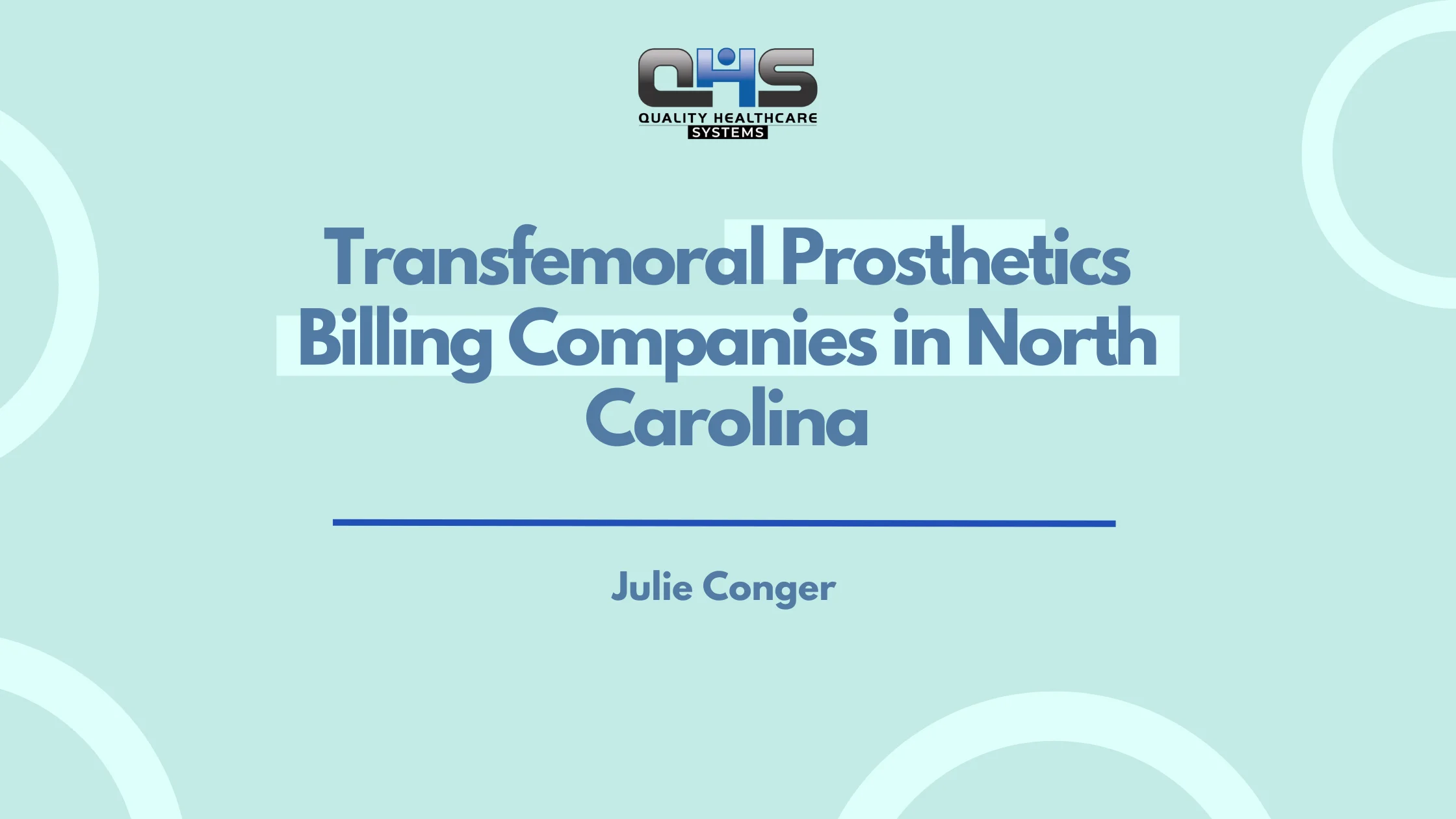Wound care is a critical part of modern healthcare—and it’s big business. In fact, chronic wound treatment affects over 6.5 million patients in the U.S. alone, costing billions annually. As the need for specialized care increases, so does the complexity of billing. Whether you’re managing acute wounds or chronic conditions, understanding what services are reimbursable is key to keeping your practice compliant and profitable.
What Types of Wound Care Services Are Billable?
Providers can bill for a variety of wound care treatments when services meet medical necessity and documentation requirements. Below is an overview of common wound types and billable procedures.
Wound care services span treatment for many conditions, including pressure ulcers, diabetic foot ulcers, surgical incisions, and burn injuries. Each type of wound may involve different modalities of care and documentation.
Both acute wounds and chronic wound treatment may be considered reimbursable wound care services if appropriately coded and justified.
Common Billable Wound Care Services
-
Debridement (surgical, enzymatic, mechanical)
Removes necrotic tissue to promote healing and must be well-documented to meet criteria for reimbursement. -
Negative pressure wound therapy (NPWT)
Applies suction to accelerate healing in chronic or complex wounds, often used in outpatient and inpatient settings. -
Skin grafts and wound closures
Utilized for severe or non-healing wounds; billing varies by graft type and procedure complexity. -
Dressing changes (limited billing)
Routine dressing changes are typically not billable unless performed during a separately documented procedure. -
Hyperbaric oxygen therapy
Used to treat non-healing wounds by enhancing oxygen supply at the tissue level; must meet strict guidelines to qualify.
What Documentation Is Required to Bill for Wound Care?
Accurate, timely, and complete documentation is the foundation of successful billing for reimbursable wound care services. Whether you’re treating acute wounds or managing complex chronic wound treatment, clear records support medical necessity, streamline audits, and reduce the risk of claim denials.
In fact, missing or insufficient documentation remains one of the leading causes of delayed payments and insurance rejections. Providers must capture every relevant detail to justify the services rendered and demonstrate compliance with payer requirements.
Proper wound care billing documentation should paint a full clinical picture. This includes the wound’s progression, specific treatments provided, and the provider’s qualifications. Without this level of clarity, even valid services may be denied reimbursement.
Key Documentation Elements for Wound Care Billing
-
Wound size, depth, location
Record exact measurements and anatomical site to show treatment complexity and guide proper coding. -
Type and stage of wound
Indicate whether it’s an acute wound, chronic ulcer, surgical site, or burn, and include the clinical stage or severity. -
Procedures performed and time spent
Specify debridement methods, dressing types, or advanced therapies like NPWT, along with duration of each service. -
Provider credentials and signatures
Include full provider name, license type (e.g., MD, RN, PA), and signature to validate billing and meet audit standards.
Pro Tip: Missing documentation is a top cause of claim denials—especially in chronic wound treatment. Always review records before submission.
What CPT Codes Are Used for Wound Care Billing?
| CPT Code | Description | Use Case |
|---|---|---|
| 97597 | Debridement of open wound (1st 20 sq cm) | Selective debridement |
| 97598 | Each additional 20 sq cm | Add-on code |
| 11042 | Debridement, subcutaneous tissue | Used for deeper wound layers |
| 11043 | Muscle debridement | For more extensive wounds |
| 97605 | NPWT (<50 sq cm) | Negative pressure wound therapy |
| 97606 | NPWT (>50 sq cm) | Large wound sites |
What is the role of ICD-10 codes in wound care billing?
ICD-10 codes directly affect reimbursement by defining the medical necessity of the procedure. They must precisely describe the wound’s type, location, stage (for ulcers), chronicity, and any underlying condition. Using nonspecific or outdated diagnosis codes increases the risk of claim denials or audits.
What ICD-10 Codes Are Commonly Used for Wound Care?
Selecting the correct ICD-10 code is essential for successful wound care billing. Codes should accurately reflect the type, anatomical site, and severity of the wound. This ensures that chronic wound treatment and acute wounds are categorized properly, supporting the medical necessity for reimbursable wound care services.
Improper coding not only delays payment but can trigger audits or denials. Always align your diagnosis codes with the documentation in the patient’s record.
| ICD-10 Code | Diagnosis | Type |
|---|---|---|
| L89.2 | Pressure ulcer, sacral region | Chronic pressure ulcers |
| L97.4 | Non-pressure ulcer, lower leg | Diabetic/venous wounds |
| T81.31XA | Disruption of surgical wound | Postoperative wounds |
| S91.001A | Open wound of foot, initial encounter | Traumatic wounds |
Use specific codes whenever possible, and include staging or encounter types (e.g., initial, subsequent, sequela) to match the clinical scenario. This coding precision supports proper classification of acute wounds versus chronic wound treatment, ensuring eligibility for reimbursable wound care services.
What CPT Codes Are Commonly Used for Wound Care Procedures?
CPT codes represent the procedures performed during wound care and are critical for billing accuracy. Correct use ensures appropriate reimbursement for both acute and chronic wound treatment.
| CPT Code | Procedure Description |
|---|---|
| 11042 | Debridement of subcutaneous tissue, first 20 sq. cm |
| 97605 | NPWT (Negative Pressure Wound Therapy), ≤50 sq. cm |
| 15002 | Surgical preparation of wound bed for skin graft |
| 29580 | Application of Unna boot for venous leg ulcers |
| 99183 | Supervision of hyperbaric oxygen therapy session |
What HCPCS Codes Apply to Wound Care Supplies?
HCPCS codes are used to bill for durable medical equipment and supplies associated with wound care. These codes are especially important when billing Medicare and other payers for items used in chronic wound treatment and the management of acute wounds. Proper coding ensures reimbursement for eligible wound care materials not bundled into procedural charges.
Here are common HCPCS codes for wound care supplies:
-
A6219 – Gauze dressing, non-impregnated
Used for covering and protecting open wounds to promote healing and prevent infection. -
A6223 – Foam dressing
Absorbent foam for moderate to heavily exuding wounds, often used in pressure ulcer treatment. -
A6402 – Sterile pad, small
Provides a sterile barrier to protect minor wounds or as secondary dressing in wound care. -
E2402 – NPWT pump and supplies
Covers the rental of negative pressure wound therapy systems and related single-use supplies.
Note: Many wound care supplies are bundled into procedure codes—especially in hospital outpatient departments—so separate billing may not always be allowed.
How Do You Use Modifiers in Wound Care Billing?
Modifiers are essential tools in medical billing that provide additional context to payers, helping clarify why certain procedures or services were performed in specific scenarios. In wound care billing, correct modifier usage can be the difference between a clean claim and a denied one.
Modifiers ensure that services are not misinterpreted as duplicates or bundled, especially when treating chronic wound conditions or performing complex wound management procedures across multiple sites or sessions.
Because wound care often involves repeated services, procedures at multiple anatomical sites, or evaluation and management (E/M) visits on the same day, modifiers play a critical role in justifying reimbursable wound care services. However, misuse of these codes is a top trigger for payer audits, denials, and potential overpayment recoupments.
Proper modifier application must be supported by clear, timely, and accurate documentation that explains the clinical necessity of each billed service.
Key Modifiers for Wound Care Billing
-
Modifier 59 – Distinct Procedural Service
Use when a procedure is performed at a different anatomical site or during a separate encounter. For example, if two debridements are done on separate limbs in the same session, this modifier distinguishes the services to avoid automatic bundling. -
Modifier 25 – Significant, Separately Identifiable E/M Service by Same Provider on Same Day
Apply when a patient receives a medically necessary evaluation and management (E/M) service that is separate from a procedure done the same day (e.g., assessment of a new wound followed by debridement). Documentation must clearly outline the distinct nature of the E/M service. -
Modifier 76 – Repeat Procedure or Service by Same Physician or Other Qualified Health Care Professional
Used when the same procedure is repeated on the same day by the same provider (e.g., a patient requires repeat wound irrigation due to excessive bleeding). This modifier ensures correct payment for both procedures without appearing as an error or duplicate. -
Modifier 77 – Repeat Procedure by Another Physician or Other Qualified Health Care Professional
Use when the same service is repeated on the same day, but by a different provider. For example, if one clinician initiates debridement and another continues it later in the same day due to a shift change. -
Modifier XE – Separate Encounter
Applies when procedures are performed during entirely different encounters on the same day. Common in outpatient wound care when patients return later for continued treatment. -
Modifier XS – Separate Structure
Use when a service is performed on a different organ or structure (e.g., bilateral wounds on different limbs), supporting unbundling of otherwise grouped services. -
Modifier XU – Unusual Non-Overlapping Service
Used when a procedure does not overlap usual components of another service provided (e.g., two debridement methods performed that are normally bundled but clinically distinct).
How do modifiers affect wound care billing?
Modifiers are essential to avoid bundling denials and to get paid for services performed within global periods. If used incorrectly or omitted, they can lead to claim rejections or payment reductions.
⚠️ Do not overuse Modifier 59, as CMS and private payers heavily audit it for abuse. Use -XS, -XU (if payer supports) for even clearer specificity.
How Is Wound Care Billed in Inpatient vs Outpatient Settings?
Understanding how medical billing for wound care differs between inpatient and outpatient settings is essential for accurate claim submission and reimbursement. Each setting follows distinct billing frameworks, and the types of codes used—as well as how services are reimbursed—can vary significantly.
Whether managing chronic wound treatment in a hospital or addressing acute wounds in a clinic, providers must align their coding and documentation practices with the care setting to avoid denials.
Inpatient Wound Care Billing
In the inpatient setting, wound care services are typically included under Diagnosis-Related Groups (DRGs). These are bundled payments assigned based on the patient’s diagnosis, comorbidities, and procedures performed during their hospital stay.
This means individual wound care procedures (e.g., debridement or dressing changes) are not billed separately. Instead, they are factored into the overall payment determined by the DRG.
For example, a patient hospitalized for a severe pressure ulcer may fall under DRG 592 (Skin ulcers with MCC). The ICD-10 code L89.2 (pressure ulcer, sacral region) helps define the DRG category. Though providers document every wound care intervention, separate procedural billing is not permitted within the inpatient global payment model.
Related Posts:
- Medical Billing for Hemipelvectomy Prosthetic
- Medical Billing for Spinal Orthoses
- Prosthetic Billing for Lower Limbs
- Medical Billing for Transtibial Prosthetic
Outpatient/Office Wound Care Billing
In contrast, outpatient and office-based wound care relies on itemized billing using CPT, ICD-10, and HCPCS codes. Services like debridement, negative pressure wound therapy, or application of dressings are billed individually. This environment allows for more precise reimbursement but comes with a higher audit risk due to the volume of line-item services billed.
For instance, treating a diabetic foot ulcer in a wound care clinic might involve:
-
CPT code 97597 for selective debridement,
-
HCPCS code A6219 for gauze dressings,
-
ICD-10 code L97.4 to diagnose the non-pressure ulcer.
In this setting, medical billing must be meticulously documented to justify every billed service. Unlike inpatient settings, each procedure must be supported with proper modifiers, time tracking, anatomical specificity, and clinical rationale.
Comparison of Inpatient vs. Outpatient Wound Care Billing
| Setting | Billing Method | Example Codes |
|---|---|---|
| Inpatient | DRG + ICD-10 | DRG 592, L89.2 |
| Outpatient | CPT + ICD-10 + HCPCS | 97597, A6219, L97.4 |
In summary, inpatient wound care billing is bundled into DRGs with limited procedural coding flexibility, while outpatient billing allows detailed service-level coding but demands greater scrutiny. Understanding these differences ensures accurate medical billing and maximizes reimbursement opportunities for both acute wounds and chronic wound treatment cases.
Common DRGs Associated with Inpatient Wound Care Billing
Here is a focused list of Diagnosis-Related Groups (DRGs) commonly used for inpatient wound care cases. These DRGs determine the bundled payment hospitals receive for patient stays involving wound treatment.
| DRG Code | Description | Typical Use |
|---|---|---|
| 592 | Skin ulcers with MCC (Major Complications/Comorbidities) | Severe pressure ulcers, infected wounds |
| 593 | Skin ulcers with CC (Complications/Comorbidities) | Moderate-stage ulcers with secondary issues |
| 594 | Skin ulcers without CC/MCC | Mild ulcers, early-stage wounds |
| 573 | Skin graft and/or debridement for skin ulcer or cellulitis with MCC | Surgical wound care with complications |
| 574 | Same as above, with CC | Grafting or debridement with minor issues |
| 575 | Same as above, without CC/MCC | Basic procedures without additional risks |
| 602 | Cellulitis with MCC | Severe wound infections |
| 603 | Cellulitis with CC | Moderate infection, no major comorbidities |
| 604 | Cellulitis without CC/MCC | Localized infection, outpatient care not viable |
Each DRG is assigned based on ICD-10 diagnosis and procedure codes documented during the stay. Accurate documentation ensures the correct DRG and reimbursement level.
How Do You Bill for Wound Debridement?
Wound debridement is a common and medically necessary procedure in both acute and chronic wound treatment. It involves the removal of dead, damaged, or infected tissue to promote healing and reduce infection risk. In medical billing, accurate coding depends on the type of debridement performed, the method used, and the depth and size of the wound treated. There are two primary categories: selective and non-selective debridement.
Types of Debridement and Corresponding CPT Codes
-
Selective Debridement (CPT 97597, 97598)
Involves removal of nonviable tissue without cutting into the viable tissue. Typically done using forceps, scissors, or irrigation.-
97597: Debridement of skin and/or necrotic tissue, first 20 sq. cm
-
97598: Each additional 20 sq. cm
-
-
Non-Selective Debridement (CPT 11042–11047)
Involves removal of both necrotic and some viable tissue, often by sharp dissection or surgical instruments. Billing is based on the depth (subcutaneous tissue, muscle, bone) and surface area.-
11042–11047: Range includes skin to bone-level debridement, each with size-based increments
-
Best Practices for Billing Debridement Procedures
-
Document tissue type removed
Specify necrotic slough, eschar, granulation, or infected tissue to support procedure type. -
Include depth and tools used
Detail whether debridement was down to dermis, fascia, muscle, or bone. List instruments used (e.g., scalpel, curette). -
Ensure photos (if required by payers)
Some insurers require photographic evidence to validate medical necessity, especially for high-level or repeated debridements.
Proper documentation and code selection are crucial for ensuring debridement services are recognized as reimbursable wound care services. Without detailed records, even legitimate procedures may be denied during payer review.
What Are Common Mistakes in Wound Care Billing?
The most common wound care billing mistakes include incorrect code usage and poor documentation. These errors can delay reimbursement or result in claim denials.
-
Using E/M instead of procedure code: Providers often bill evaluation and management (E/M) codes when a specific procedure code, such as a debridement CPT code, should be used.
-
Not appending necessary modifiers: Modifiers like 25 or 59 are essential to show separately billable services during the same visit.
-
Incorrect site documentation: Failing to record exact wound location or depth may cause mismatch with ICD-10 codes for chronic wounds.
-
Double-billing bundled procedures: Dressing changes and routine care are sometimes included in the main procedure; billing them separately violates payer rules.
These mistakes can trigger payer audits and reduce wound care CPT code reimbursement.
How Can You Maximize Reimbursement for Wound Care?
To maximize reimbursement for wound care, providers must ensure clean claims backed by accurate, thorough documentation.
-
Ensure thorough documentation every visit: Record wound dimensions, tissue type, location, and performed procedures using compliant language.
-
Verify payer-specific guidelines: Medicare and private insurers have unique rules for billing wound debridement and negative pressure wound therapy (NPWT).
-
Train staff on CPT/ICD updates annually: Staying current with CPT codes for wound care in 2025 and ICD-10 changes minimizes costly errors.
-
Use certified wound care specialists: Credentialed providers improve care quality and billing accuracy, especially in outpatient wound care settings.
Accurate use of chronic wound ICD codes, modifier application, and clear clinical notes ensure claims pass payer scrutiny.
What Payer Policies Affect Wound Care Billing?
Medicare, Medicaid, and commercial payers enforce strict guidelines for wound care billing that impact frequency, documentation, and authorization.
-
Frequency limitations: For example, Medicare may limit selective debridement to once per week unless medical necessity is documented.
-
Prior authorization for NPWT: Durable medical equipment (DME) like NPWT devices often require approval before use in home or outpatient care.
-
Global periods on surgical wounds: Surgical wound debridement may fall within a global period, making it non-billable unless modifiers justify separate care.
Staying aligned with outpatient wound care billing guidelines helps avoid denials and ensures compliant coding.
Are There Any Compliance or Audit Risks in Wound Billing?
Yes, wound care billing is highly scrutinized and carries audit risk if documentation and coding are not exact.
Common Compliance Issues:
-
Upcoding wound severity: Assigning codes for more severe or infected wounds without justification can be flagged during payer audits.
-
Billing for undocumented services: If a service isn’t clearly documented, it’s considered not performed and is subject to denial or recovery.
-
Excessive frequency of visits: Frequent wound care without clinical progression or change in treatment can raise red flags.
Risk Mitigation Strategies:
-
Periodic internal audits: Regular reviews catch patterns of errors or overbilling.
-
Credentialing wound care providers: Ensures only qualified professionals deliver and bill for care.
-
Accurate ICD-10 linking: Always match the ICD-10 code to the wound’s location, type, and severity to avoid coding mismatches.
Following a structured wound care compliance checklist can significantly lower your audit risk.
How Can a Medical Billing Company Help with Wound Care Billing?
A medical billing company helps streamline wound care billing by ensuring precise coding, faster claims processing, and fewer denials.
Outsourcing billing ensures:
-
Coding accuracy: Specialists apply the correct wound care CPT codes for 2025, ensuring alignment with payer policies.
-
Denial management: Experienced teams quickly resolve rejections, helping recover revenue.
-
Revenue cycle optimization: Improved collections and clean claims reduce administrative burdens and improve cash flow.
Wound Care Billing Compliance Checklist
Wound care billing is governed by strict rules to ensure that only medically necessary and properly documented services are reimbursed. Noncompliance can result in denied claims, audits, fines, or even allegations of fraud.
Below is a complete and detailed compliance checklist designed for healthcare providers, billing teams, and administrators to ensure proper handling of medical billing for acute wounds and chronic wound treatment services.
1. Patient Eligibility and Coverage Verification
-
Confirm patient’s insurance plan and benefits specific to wound care services.
-
Verify prior authorization requirements (e.g., for NPWT, HBOT, or surgical debridement).
-
Identify frequency or visit limits and specific exclusions under the plan.
2. Medical Necessity Documentation
-
Ensure clear documentation of wound type, stage, and location (e.g., L97.4 – diabetic ulcer).
-
Include duration of wound to classify it as acute or chronic.
-
Note the presence of comorbidities affecting wound healing (e.g., diabetes, PAD).
3. Detailed Wound Assessment
-
Measure length, width, depth in centimeters.
-
Document exudate level, odor, infection signs, and tissue type.
-
Note surrounding skin condition and changes from previous visits.
4. Accurate Procedure Coding
-
Use correct CPT codes for wound care procedures:
-
97597/97598 for selective debridement.
-
11042–11047 for non-selective/surgical debridement.
-
29580 for Unna boots, 97605–97606 for NPWT.
-
-
Link with specific ICD-10 diagnosis codes (e.g., L89.2 for sacral pressure ulcer).
5. Supply Billing (HCPCS Codes)
-
Use appropriate HCPCS codes for wound care supplies:
-
A6219 – Gauze dressing
-
A6223 – Foam dressing
-
E2402 – NPWT pump
-
-
Ensure supply use is not bundled into facility procedural billing.
6. Modifier Usage
-
Apply correct modifiers to avoid bundling denials:
-
Modifier 25 for significant E/M on the same day as a procedure.
-
Modifier 59 for distinct procedural services at different sites.
-
Modifier 76/77 for repeated procedures (same/different provider).
-
-
Ensure supporting documentation for each modifier used.
7. Evaluation & Management (E/M) Coding
-
E/M codes (e.g., 99213, 99214) can only be billed if a separate evaluation is performed.
-
Include history, physical exam, and medical decision-making documentation.
-
Use Modifier 25 if E/M is billed on the same day as a procedure.
8. Photo Documentation (When Required)
-
Some payers require before-and-after wound photos (especially for NPWT, HBOT, or advanced surgical treatment).
-
Label photos with date, patient ID, wound site, and stage.
-
Store securely in EMR with relevant clinical notes.
9. Frequency and Duration Monitoring
-
Track frequency of services like debridement or dressing changes.
-
Ensure compliance with Medicare’s Local Coverage Determinations (LCDs) and payer-specific limits.
-
Document progress or justification for ongoing treatment.
10. Provider Credentials and Supervision
-
Verify that services are provided by credentialed providers (MD, DO, NP, PA).
-
Confirm incident-to billing compliance for services performed by staff under physician supervision.
-
Ensure proper provider signatures and date-stamped notes on all records.
11. Accurate and Timely Claim Submission
-
Match claim data with medical record documentation.
-
Submit within payer-specified timeframes to avoid rejections.
-
Validate use of NPI, place of service codes, and referring provider details.
12. Audit Readiness
-
Maintain thorough documentation for each visit, including:
-
Wound assessments
-
Treatment plans
-
Services rendered
-
Justification of continued care
-
-
Keep records for at least 7–10 years depending on payer rules.
How can I increase reimbursement for wound care services?
To maximize reimbursement for wound care services, your approach must be both strategic and compliant. Start by ensuring all billable services are properly coded and not bundled under a single CPT code due to lack of modifier use. Then, make sure you’re billing based on medical necessity and payer-specific coverage guidelines.
Here are proven strategies:
-
Use appropriate wound care CPT codes 2025 based on the procedure depth and method.
-
Document each visit thoroughly with wound size, drainage, tissue type, and clinical rationale.
-
Check for chronic wound ICD codes that support long-term treatment (e.g., diabetic foot ulcers).
-
Avoid missed billing opportunities for procedures like NPWT or skin substitute applications.
-
Know when to bill E/M with Modifier 25, especially during re-evaluations.
💡 Fact: Many outpatient wound care clinics underbill due to confusion between selective vs. excisional debridement. Choose CPT 11042+ when tissue below the dermis is removed.
How do I optimize wound care coding for higher reimbursement?
Wound care coding optimization starts with accuracy, specificity, and frequent updates. It’s essential that your team understands the distinctions between similar codes and how to document each one properly to pass audits and meet medical necessity.
Here are practical steps to optimize wound care coding:
-
Train coders and clinicians annually on changes in wound care CPT codes 2025.
-
Perform internal audits on ICD-10 and CPT match rates.
-
Use correct units and measurement-based coding (e.g., 97598 per additional 20 cm²).
-
Verify skin substitute billing guidelines, as these have strict compliance rules.
-
Avoid coding for debridement when only a dressing change occurred—this triggers payer denials.
🛑 Common Error: Billing 97597 for a simple dressing change or wound cleansing without any selective removal of devitalized tissue.
How often can wound care be billed to insurance?
The frequency of wound care billing depends on the service type, wound severity, and the payer’s policies. Most insurers, including Medicare, limit certain services like debridement to specific frequencies unless clinical documentation justifies exceptions.
General frequency guidelines (varies by payer):
| Procedure | Typical Frequency Allowed | Notes |
|---|---|---|
| Selective Debridement (97597) | 1–3 times per week | May need detailed justification if billed more frequently |
| NPWT (97605/97606) | Every 48–72 hours | Requires prior authorization for most plans |
| Excisional Debridement (11042+) | Once per week per site | Limited to medically necessary instances |
| Skin Substitute Application | Every 7–14 days | Must document failure of conservative care |
| E/M Visits (99203–99215) | As clinically needed | Use Modifier 25 when billed with procedures |
📄 Tip: Use outpatient wound care billing guidelines from your MAC and private payers. They provide the medical necessity and frequency limits for each CPT/HCPCS code.
What are payer-specific wound care billing guidelines?
Each insurance provider — including Medicare, Medicaid, and commercial plans — publishes wound care billing guidelines outlining frequency limits, documentation expectations, and covered services. Not following these guidelines often leads to denials.
Key payer-specific rules:
-
Medicare:
-
Requires strict documentation for debridement (size, tissue removed).
-
NPWT requires prior authorization and continued progress notes.
-
LCDs vary by MAC region—always refer to your local carrier’s guidance.
-
-
Medicaid:
-
Coverage varies by state but often mirrors Medicare.
-
May have restrictions on NPWT and skin substitutes.
-
-
Private Payers:
-
Require pre-certification for NPWT and sometimes for excisional debridement.
-
Often follow Medicare rules but are stricter on modifier and documentation use.
-
Global period overlaps may restrict additional billing unless Modifier 58 or 79 is used correctly.
-
📌 Don’t forget to verify wound care compliance checklist from each payer’s portal to avoid preventable denials.
What Is the Best Company for Wound Care Billing?
Quality Healthcare System (QHS) is widely recognized as the most reliable wound care billing service provider in North Carolina, USA. With specialized expertise in wound care coding and claims management, QHS ensures accurate CPT/ICD coding, timely claim submissions, and comprehensive documentation support—helping healthcare providers improve reimbursement rates and reduce denials.
Their experienced billing team understands the unique challenges of outpatient and chronic wound care billing and delivers tailored, client-specific solutions that optimize revenue and maintain compliance.





